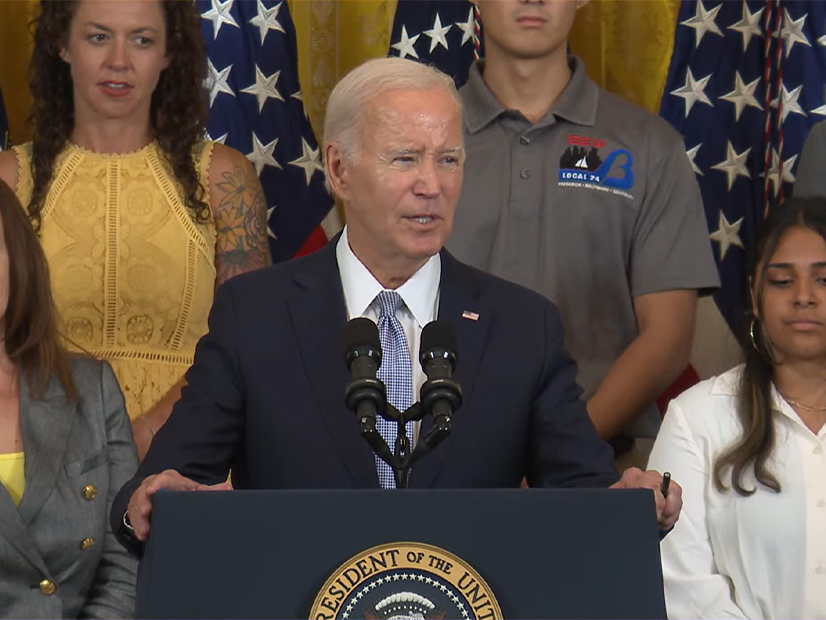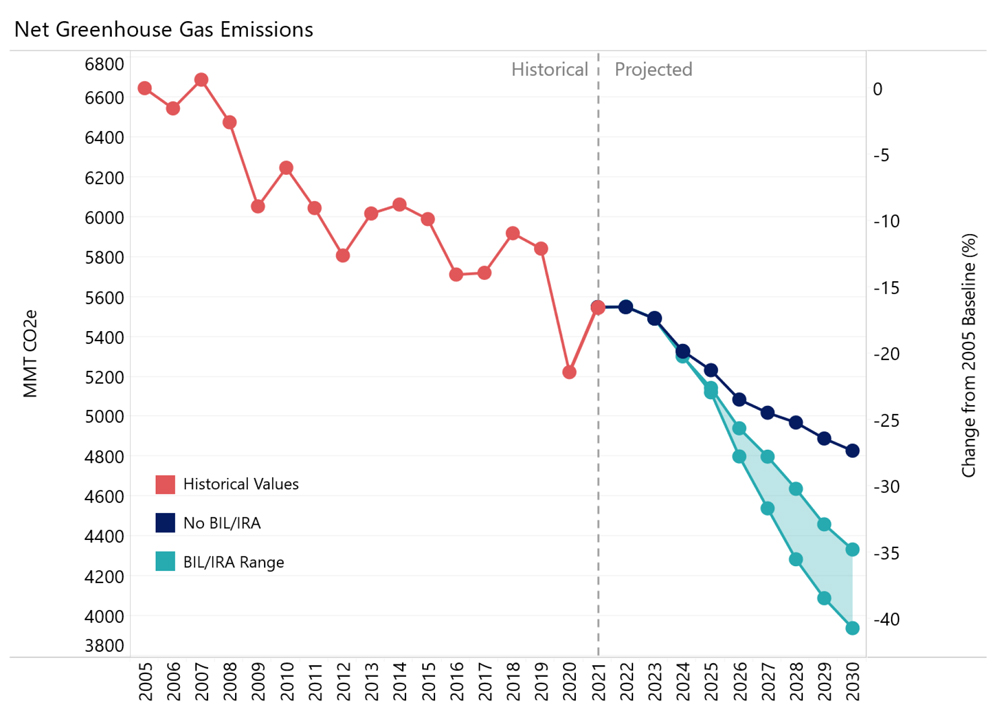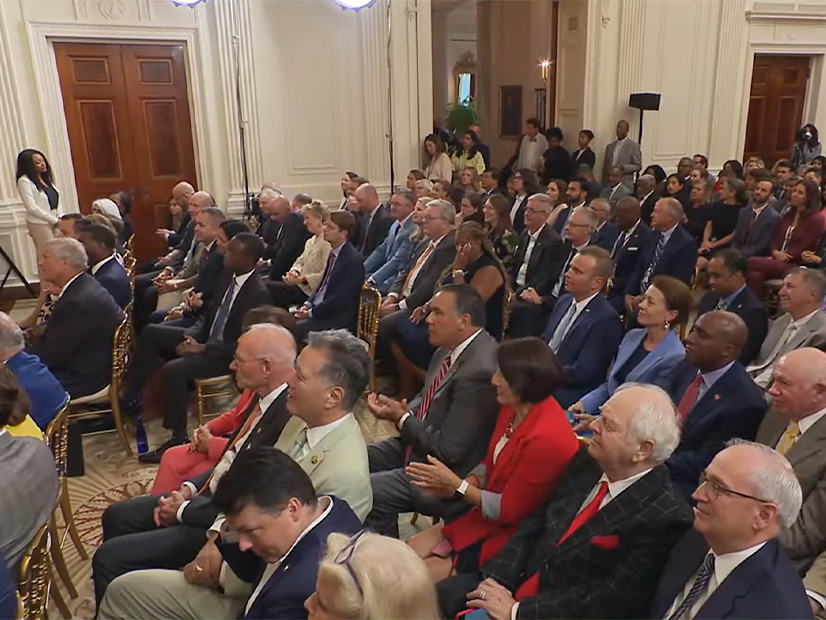
By 2030, the combined impact of the Inflation Reduction Act and Infrastructure Investment and Jobs Act could add up to 475 GW of new solar and 250 GW of new wind power to the U.S. electric grid, according to a new report from the Department of Energy.
Released on the first anniversary of the IRA’s enactment, the report looks at the combined impacts of the two laws across a range of key economic and climate measures from 2022 to 2030. Top line figures include:
-
- electric bill savings for U.S. families of $27 billion to $38 billion, and a 13 to 15% reduction in commercial electricity bills for American businesses;
- a cut in U.S. oil imports of 44 to 59%, which would also cut spending on imported oil by 13 to 22%;
- an increase in clean energy — including nuclear, hydropower, geothermal and fossil fuels with carbon capture — on the U.S. grid from 42% in 2022 to 72 to 81% by 2030;
- sales of zero-emission vehicles rising from 8% of total car sales today to 49 to 65% by 2030; and
- a 35 to 41% drop in greenhouse gas emissions over 2005 levels versus a projected 27% decrease without the two laws.
The mostly rosy picture of the laws’ impact is based on new modeling by DOE incorporating the potential effects of the IRA and IIJA into its National Energy Modeling System, with scenarios projecting “moderate” and “advanced” uptake of the laws’ provisions. However, looking at the report’s technical documentation, it is unclear if the new modeling takes into account ongoing challenges to clean energy deployment ― specifically, permitting, interconnection and transmission.
Still, President Joe Biden pointed to many of the figures as he celebrated one year of the IRA being law at the White House on Wednesday, calling the law “one of the biggest drivers of jobs and economic growth this country has ever seen.”
Biden said the tax credits in the law will break the clean energy industry’s long dependence on China for a range of equipment, drawing manufacturing and supply chains back to the U.S. “We’re bringing critical supply chains and technologies home for electric vehicle batteries, solar panels, wind turbines [and] critical minerals.”
A White House fact sheet, also released Wednesday, pegged new clean energy manufacturing investments since the IRA was signed at $110 billion, including $70 billion in the EV supply chain and $10 billion in solar manufacturing.
Biden also hailed the IRA and IIJA’s $50 billion in investments for energy resilience.
“These laws support important priorities, from addressing historic drought on the Colorado River Basin … [to] responding to coastal erosion [and] sea-level rise in the Gulf of Mexico and helping reduce the effects of extreme heat by investing nearly $1.5 billion to plant trees and expand community parks,” Biden said.
Speaking before the president, Scott Strazik — CEO of GE Vernova, General Electric’s clean energy spinoff — also praised the IRA, saying the law “is working to drive action on climate change, energy security, manufacturing jobs and American competitiveness.”
In Schenectady, N.Y., where GE was founded, “we’ve invested $50 million this year, [and] 200 new union jobs, to create the first 6-MW wind turbine in the U.S.,” Strazik said.
Manchin Missing
Absent from the packed room at the White House — and the president’s speech — was Sen. Joe Manchin (D-W.Va.), who played a critical role in forging final compromises on the law last year. Biden recognized his work at the IRA signing, handing him the pen he used to sign the law and shaking his hand.
A year later, Manchin and the White House are at odds over implementation of the law. The West Virginian has said the IRA is primarily an energy security law, and he has criticized the Biden administration’s efforts to roll it out as a clean energy and climate initiative.
In a statement released Wednesday, Manchin recognized the benefits his state has received from the law, including major investments from long-duration battery startup Form Energy and Berkshire Hathaway subsidiary BHE Renewables.
While praising the law for “putting the interests of Americans and West Virginians first,” he pledged to “push back on those who seek to undermine this significant legislation for their respective political [agendas], and that begins with my unrelenting fight against the Biden administration’s efforts to implement the IRA as a radical climate agenda instead of implementing the IRA that was passed into law.”
When asked about Manchin’s criticism during a press briefing Wednesday, White House senior adviser John Podesta sought to downplay the situation as a matter of interpretation.
“We’re trying to implement it based on what the Congress passed, the law that was written,” Podesta said. “Now he has disagreed a little bit with some of those interpretations, but I think we are operating in good faith to get guidance out as quickly as possible so that these people have the confidence that they can make these long-term, 10-year investments that are included in the act.”
Stronger criticism came from Rep. Cathy McMorris Rodgers (R-Wash.), chair of the House Energy and Commerce Committee, who framed the IRA as “a reckless tax-and-spending spree.”
“One year later, inflation has risen an additional 3%, and people are still paying higher costs to feed their families, keep the lights on and fill up their gas tanks than when President Biden took office,” McMorris Rodgers said. “His disastrous agenda has led innovators to stop research into new, potentially lifesaving treatments and cures, while also increasing our reliance on China.”
But both Podesta and Biden noted that Republican opposition to the law has been tempered by the clean energy investments and jobs the law has brought to their states.
“Once those investments happen, once those jobs are created, once those people are at work in red districts, purple districts, blue districts, it’s very hard to walk away from that,” Podesta said.



